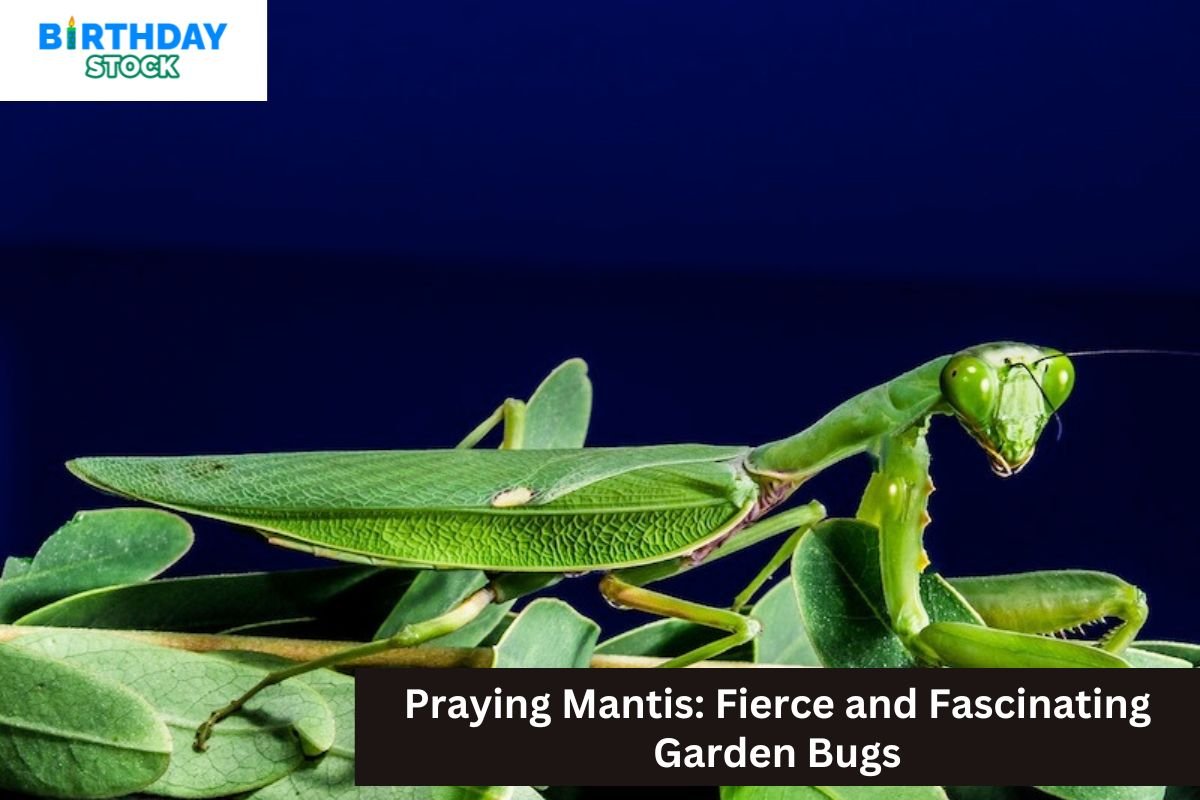Praying Mantis: Fierce and Fascinating Garden Bugs:- It is possible to find praying mantises in gardens all over the world, and they are among the many fascinating and beneficial insects that may be found there. One can discover them in gardens located in a variety of locations around the world.
Praying Mantis: Fierce and Fascinating Garden Bugs
Because of their distinctive appearance, the fact that they engage in predatory behaviors, and the fact that they exhibit intriguing behaviors, these insects are known to make a significant contribution to the preservation of ecological harmony in agricultural fields and gardens. This is one of the most significant contributions that these insects make.
Distinctive Appearance
The distinct characteristics of praying mantises are their elongated bodies, heads that are triangular in shape, and huge eyes that are compound in shape. It is because of the peculiar posture that they adopt, which is to fold their forelegs as if they were praying that they got their name. The mantis have robust forelegs that are studded with spines that assist it in grabbing and holding onto its prey.
These forelegs are not merely for cosmetic purposes. Mantises can be found in a variety of colors, most commonly green or brown, which allows them to blend in perfectly with the vegetation and plants around them. In order to improve their capacity to ambush prey, certain species even imitate the appearance of flowers or foliage.
Also see : How to Grow a Carnivorous Sundew Plant
Predatory Habits
In their capacity as voracious predators, praying mantises exert a significant influence on the management of pest populations. Many other kinds of insects, such as flies, moths, crickets, and even other mantises, are among the things that they consume as food. The ambush method is the primary component of their hunting approach.
Because they are patient hunters, mantises remain immobile for extended periods of time, waiting for their prey to reach within striking distance without being aware of their presence. Once a target is within striking distance, the mantis attacks with lightning speed, utilizing its raptorial forelegs to seize and immobilize the prey. Gardeners who want to manage pest populations without the use of chemical pesticides will find them to be excellent companions due to their predatory efficiency.
Reproduction and Life Cycle
It is equally fascinating to learn about the life cycle of a praying mantis. When the female has finished mating, she will typically lay hundreds of eggs in a structure that resembles foam and is called an ootheca. This construction hardens to protect the eggs from any predators and weather conditions. The eggs hatch in the spring, and a large number of miniature mantises that resemble small adults are released into the world.
The hatching process is dependent on the species and environmental circumstances. Until they reach adulthood, these nymphs go through a series of molts, during which they get larger with each successive molt. In spite of the fact that the sight of hundreds of baby mantises emerging from one ootheca is a marvel of nature, it also represents the beginning of severe rivalry, since these young mantises frequently consume each other.
Role in the Garden
As a result of their voracious appetite for insects that might cause damage to plants, praying mantises are extremely helpful in gardens. As a result of their ability to consume pests like aphids, caterpillars, and beetles, they contribute to the preservation of a healthy equilibrium within the garden ecosystem.
By reducing the need for chemical pesticides, this natural method of pest management contributes to the creation of a more wholesome environment for all living things, including plants, animals, and people. Additionally, the presence of praying mantises might be an indication that the ecosystem of a garden is healthy and thriving for the gardener.
Interaction with Humans
There are occasions when praying mantises engage with humans in a manner that is not always positive, despite the fact that they are generally useful. The presence of these organisms is typically appreciated by gardeners because, on the one hand, they do not pose any threat to either people or animals.
On the other hand, mantises are voracious hunters and can even consume helpful insects such as bees and butterflies. They are able to hunt without discrimination. The presence of mantises in the garden, on the other hand, has a favorable impact overall since they contribute to the management of a wide variety of insect populations that are hazardous.
Cultural Significance
Over the course of human history, praying mantises have been able to captivate the imagination of people and have been the subject of attraction in a variety of ethnicities. As a result of their stance, which is similar to that of a prayer, they are considered to be emblems of calm and contemplation in certain cultures.
They are revered in some places for their hunting skills and are regarded as emblems of patience and precision in other places. They have also become prominent subjects in the realms of art and literature, as well as in the domain of martial arts, where their movements have inspired various fighting tactics. Their distinctive behavior and look have also contributed to their popularity.















